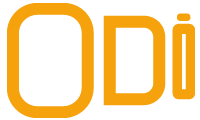It seems to me like we are missing what is going on around the world as we are constantly focused on CBRT, Interest Rates, Exchange Rates, Stock Market, Inflation and Unemployment. Given the fact that there wasn’t anything drastic about the latest CBRT and ECB decisions, I’d like to talk about some other facts today.
This week, I took a look at the World Bank poverty data. According to a comprehensive study conducted last year, 44% of world population below the global extreme poverty line lies between ages 0–14, which is directly correlated with child mortality rate. It is also reported that 80% of people living in extreme poverty tend to live in rural areas. Accordingly, 65% of these people are engaged in agriculture while 39% are deprived of education. If the World were a village of 100 people, only 1 person would have had a college education. This global population statistics based on shrinking the Earth’s population to a village of 100 people clearly shows us the degrees of inequality.
A study by World Economic Forum, on the other hand, reports that 12-13% of the world’s population lack access to electricity while a majority of earth inhabitants, 91% to be exact, have no access to PCs or smart devices. Surprised, right? If the World were a village of 100 people, only 9 out of 100 people would have had access to technology.
I can see that the hope for living together in peace and prosperity is slowly vanishes as inequality in different aspects including income distribution, access to technology and infrastructure, and educational opportunity keeps dominating the world. A relatively peaceful world prior to Global Crisis has faced rising violence when the crisis first broke out, eventually regaining its calm in 2013. As of 2014, however, global tensions started to escalate again, currently reaching its peak with Trump becoming the President of the United States of America. Knowing that Peace and Prosperity always go hand in hand, I regret to say that the situation the Earth is in today may not allow us to see the light at the end of the tunnel. World Economic Forum Meetings as well have been focused on this very issue for the last couple of years.
“Informal economy and poverty hand in hand…”
While technology and digital transformation are progressing faster than ever, it’s becoming increasingly more difficult not to notice labour and working conditions are not equal everywhere. According to a study by the World Trade Organization, the size of the informal sector in some countries has become extremely large.
In world’s poorest countries like Nepal, Chad, Togo; in lower middle-income economies such as Ivory Coast, Vietnam and Pakistan, and in upper middle-income economies, Paraguay, Mexico etc., the size of the informal economy varies between 60% and 98%.
However, Ethiopia as a low income economy, Kosovo and Kirgizstan as lower middle-income economies, and Brazil and Turkey as upper middle-income economies stand out among countries where the size of informal sectors remains between 30% to 60%. Sadly, the size of informal economy in Ethiopia is smaller than Turkey’s (46%). While Brazilian shadow economy represents 26% of its GDP, the share of the informal economy in Bulgaria stands at around 19%.
Interestingly, China and India are not ranked among the abovementioned economies, which means they are currently doing pretty fine according to the ILO statistics. As a matter of fact, while the number of business owners in India is rapidly increasing, the number of Indian billionaires doubles each year. According to some world organizations, especially the World Economic Forum expects 8% of Indian population become billionaires by 2027.
Even though Turkey’s likelihood of becoming home to large number of billionaires remains weak, the number of TRY billionaires has increased since the sharp exchange rate rises, which is only normal as the savings of those who kept their foreign currency in deposit accounts, doubled by almost 100% since the last year.
Extreme and unfounded wealth leads to extreme poverty.

